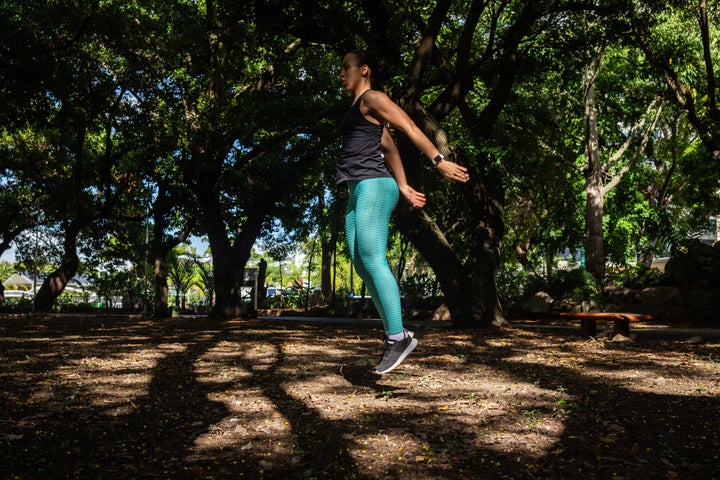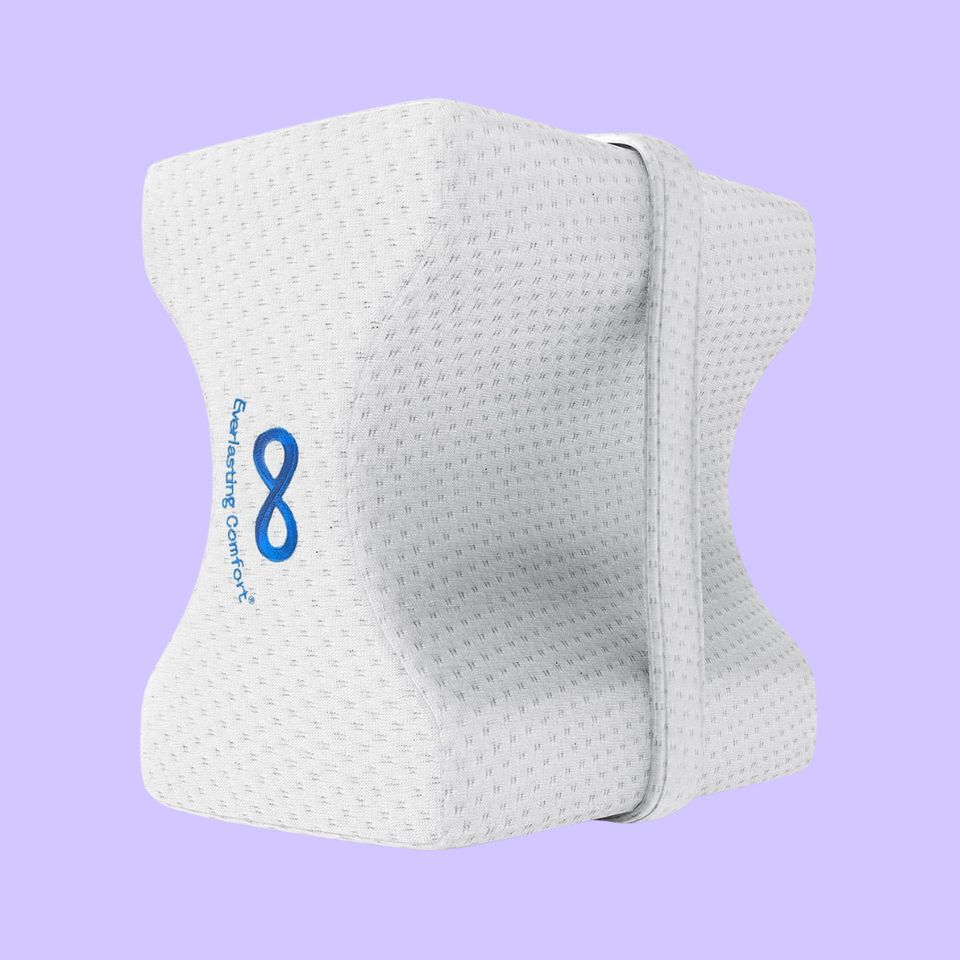
Knee injuries, knee pain and general wear and tear on the joints are common occurrences for many people ― and they should be considered when picking your workouts.
There are many kinds of common knee injuries, according to James McMillian, a head coach at Tone House, a strength and conditioning gym in New York City. You could be dealing with an issue such as an ACL tear, tendinitis, a strain, arthritis and more. Because of that, what you should and shouldn’t be doing for the health of your knee may differ based on what you’re dealing with. But, overall, some types of movements are not great for any kind of knee injury.
As a general rule of thumb, “for general knee pain, you want to avoid most movements that irritate it,” said Minky Kim, Han Training in Chicago’s founder and head trainer. So if you feel pain or notice swelling, you’ll want to avoid the exercise that caused that sensation.
But specifically, some exercises are not recommended for those with knee problems. Below, experts share what those are and what to try instead:
Jumping
It may go without saying, but if you’re dealing with a knee problem, you do not want to do any workouts that involve jumping.
High-impact activity can be irritating to general knee pain, which includes explosive-based movements, Kim said. So be wary of jumping jacks, jumping rope, jump squats or any vertical leaping.
“If somebody is an avid basketball player or has to do something that requires a lot of jumping, I would avoid those movements as well,” they added.
Running
Patrick Maloney, the lead athletic trainer at Tulane Institute of Sports Medicine in New Orleans, said impact running, which involves running on hard surfaces, is not advised for people with knee problems.
“My recommendation is somebody that has knee problems ... if you’re out running, be conscious of the surface you’re running on,” Maloney said. “If you want to run outside, instead of running on concrete or sidewalk, find a grassy area to run or a dirt area.”
But remember that running on a softer surface still impacts your joints, which could be painful. This is because running puts a lot of weight on those areas, Maloney said.
“Even better, get on a bike or elliptical, which are pretty non-impact for the knee joints — it can provide good exercise without all that impact,” he noted.
The best thing, specifically for older adults with knee problems, is walking, Maloney said. Walking is challenging and a good workout; it also has benefits, including reducing the risk of heart disease, and is suitable for your mental health, too.
Deep Squats And Lunges
McMillian said squats and lunges will create pull on your knee, making it potentially unsafe to do them at full range. “If you have a prior knee injury... you may want to do three-quarter squats until you build up,” McMillian said.
Additionally, Kim said sissy squats, which require you to be on your toes and lean back while your knees lower to the ground, are not a good exercise for someone with knee pain.
Maloney said chair squats could be a good alternative for folks looking to do squats but can’t safely do the typical movement. For the move, you simply touch your butt to the top of the chair during your squats instead of going down past that 90-degree angle, Maloney said.
“That helps limit how far you’re going down,” Maloney added.
Exercises With Quick Direction Changes
Movements that require you to twist or pivot can be a real problem for people with bad knees, McMillian said. (And these movements can cause knee injuries, too.) He explained that this includes dancing, martial arts, basketball and football.
“They have to avoid that change of direction and twisting and all that until they build a little bit more stability in their knee and structure,” McMillian said. The twisting and pivoting that occurs can mess with the traction of your knee, and if your knee isn’t stable as you’re exercising, you risk injuring yourself.
“Unless you have a knee sleeve or compression sleeve that will give you that stability when you’re pivoting or changing directions, you really want to be cautious with that lateral movement like lateral shuffles, dancing and lateral jumps — you really want to avoid [them],” McMillian added.
Explosive Weightlifting
“I would say any kind of Olympic lifting or explosive lifting” is definitely another exercise to avoid, Maloney said.
Examples include lifting a barbell over your head or doing barbell squats or snatch lifts, “where you take the bar from the ground and raise it over your head,” he said. “Those types of lifts are explosive movements.”
Instead, Maloney recommended using a controlled weight machine at the gym that won’t cause such a high amount of impact on your joints.

Water-Based Activities And The Right Equipment Help Add More Comfort
Many people who have joint pain turn to water movements for exercise, Kim said. This can include water aerobics and water movement with weights. Additionally, swimming has been found to help reduce joint pain and stiffness in people with osteoarthritis, according to a study published in the Journal of Rheumatology.
“It just reduces the amount of weight that you’re placing on your joints, especially on your knees,” Kim said. “You get to kind of float and move around feeling a little more loose and less strain of the impact of gravity.”
Some products on the market can also protect your knees. According to McMillian, knee sleeves can help stabilize the tracking of your knee. A knee sleeve can help your body deal with the impact and inflammation that happens during a run. Specifically, Hyperice is a useful knee sleeve that uses contrast therapy, so “it goes from hot to cold, which helps you with inflammation, blood flow, circulation and different things.”
McMillian also recommended knee straps for walks: “That would release a little bit of pressure that’s on your knee when you’re walking, so if you do have something like arthritis, that would be great — it just adds a little bit of structure onto your knee.” He said you can also wear a knee strap when going on a long drive.
Additionally, he said it’s important to have sneakers with good cushioning, which can help with the impact of exercise on your joints.
Think Holistically About Your Body
“I find that more acute traumas like strains or sprains can ... often come from tightness elsewhere or a limited range of motion,” Kim said. “And everything is so connected that if one part is tight and you move it just a little bit wrong, it will kind of [have] a domino effect on the rest of your body.”
They said it’s important to look at the joints above and below the impacted joint — how tight are your hips or your calf muscles? Could that be contributing to the pain you’re experiencing?
“Nothing works in isolation in our body,” Maloney added. You want to make sure you’re stretching all different body parts, properly warming up, cooling down and taking rest days.
“If your problem is the knee, you can focus on the knee joint, but you also have to address weaknesses in your hip or flexibility issues in your hip or tightness in your ankle joints those can kind of give you pain in different areas,” Maloney said.
Additionally, you should take knee or any pain in your body seriously. If you have knee issues, Maloney recommends going to an orthopedic surgeon to figure out what is happening and get tailored advice for your specific issue. It’s important not to neglect your health, and pain is often a sign of a larger issue.
“Pain is a great thing, and people kind of say pain’s bad, but the pain is there to tell us if we’re doing something bad” for our body, Maloney said.
